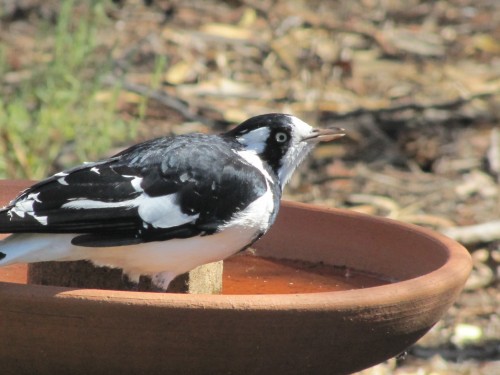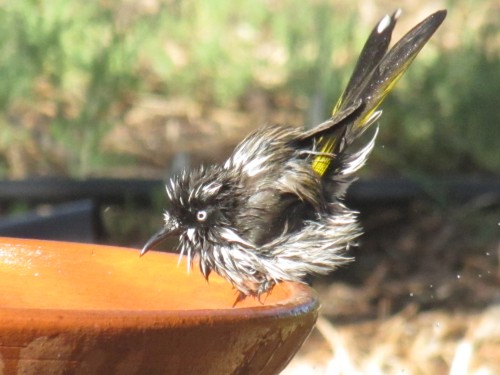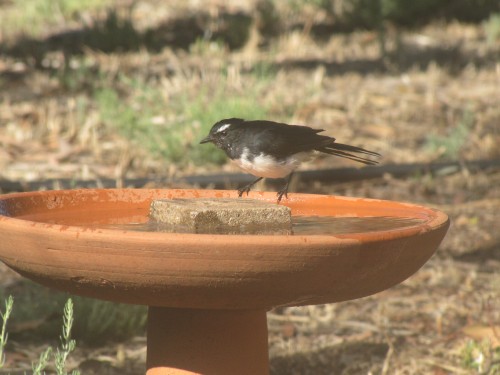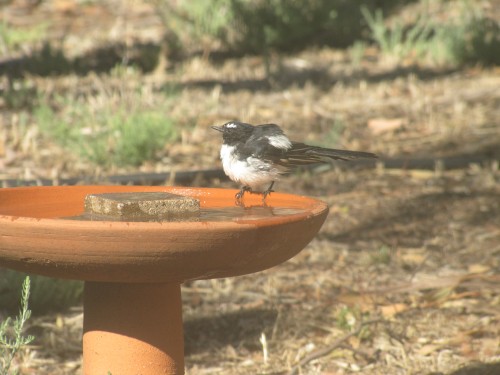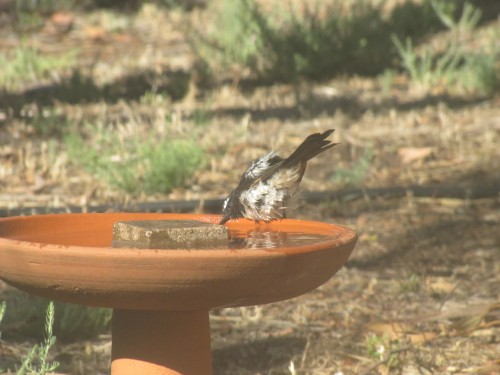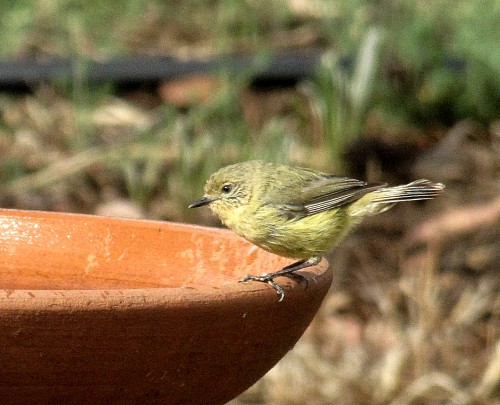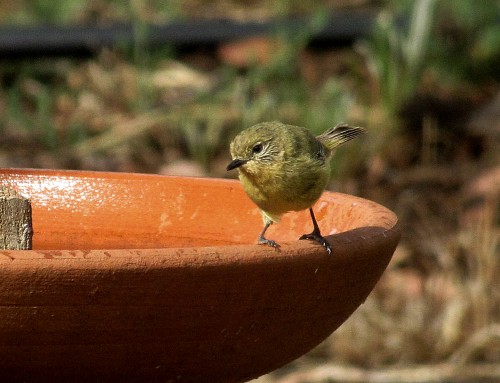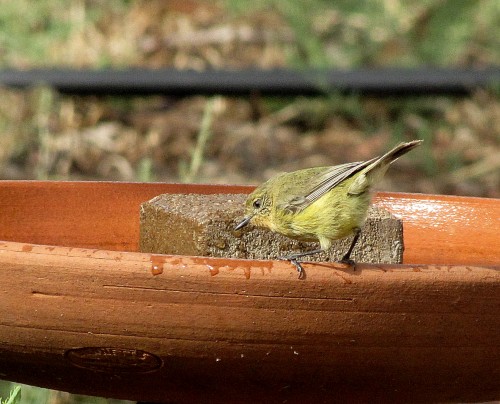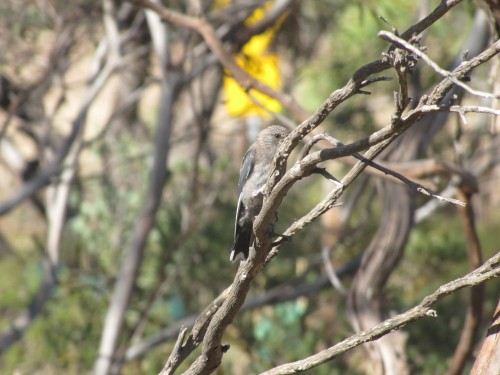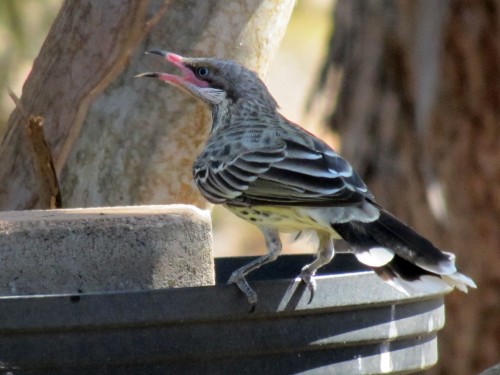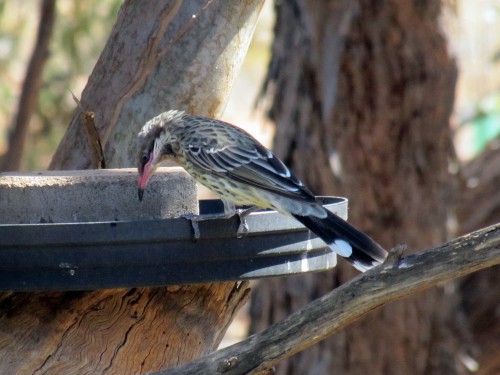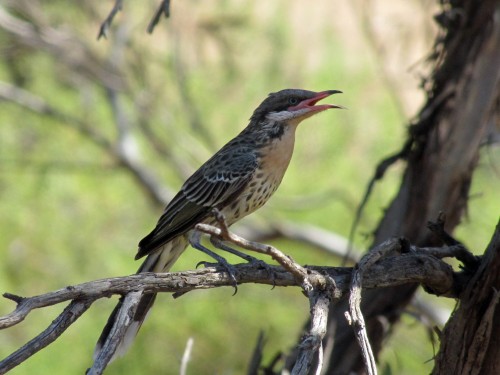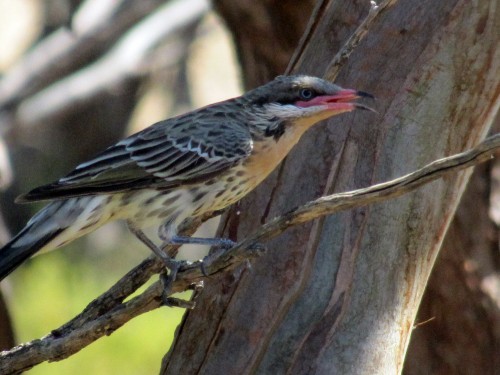Keep the water coming
Summer has arrived here in South Australia. Already during spring we have had many days with temperatures over 30C (86F) and the forecast is for a hot, dry summer. In my home town of Murray Bridge we frequently get days over 40C (104F) and occasionally the thermometer soars to as high as 46C (115F).
Whatever the temperature in summer our birds often suffer from the extreme heat and hot searing north winds. On days of high temperature there is a constant stream of birds visiting our bird baths in our garden. They not only appreciate a drink, they often take a dip as well. On days of extreme heat their very survival depends on having access to water. The death rate during hot weather would be very high.
My advice would be to put out some dishes of water, or invest in a birdbath; there are many different styles available so check out your local garden centre or pet shop. Check the birdbaths every morning, replenishing the water as necessary. And don’t forget to scrub it clean once a week (but don’t use any detergent or other cleaning agents – just a brush will do).
Keep the water coming – your garden birds will love you – and keep coming back again and again.
See more photos here.
Let’s take a bath Willie Wagtail
We get a great deal of pleasure from watching the constant parade of birds coming to our birdbath. This Willie Wagtail was really getting into the art of having a really good soaking. It is also situated strategically for great photo opportunities too.
Yellow Thornbills in our garden
Yesterday while having breakfast I observed a thornbill sized bird flitting around and on one of the birdbaths in our garden. I reached for my binoculars – they are always in easy reach from where we often sit to have our meals – and quickly identified it as a Yellow Thornbill. This is one species I don’t observe every day in our garden, but suspect that they are actually a resident breeding species, that is, they are present every day and nest in our garden.
More common is the Yellow-rumped thornbill which seems to be all over the garden at any given time on any given day. On sunny, still days the air can be filled with their twittering.
The Yellow Thornbill – also known as the Little Thornbill – is a widespread species found in eastern Australia, from southern Queensland through much of New South Wales and Victoria and into south eastern South Australia.
Juvenile Dusky Woodswallow
I was looking through some recent photos when I came across this one of a juvenile Dusky Woodswallow. I can’t fully remember the circumstances but I think it had just come to investigate the birdbath in our garden. I can’t recall if it actually had a drink or not, and it didn’t hang around for long.
Several species of woodswallow are seen from time to time in our garden or flying above. I didn’t see or hear any others on this particular occasion, though I was inside, probably with the early morning radio on in the background.
At first glance I was puzzled when I first saw this photo. The white tips on the tail give it away as a woodswallow as several of the species have white on the tail. The streaks on the head and neck indicate a juvenile, but the white strip on the leading edge of the wing indicates that it is a Dusky Woodswallow.
To take a closer look at the photo, click on the image to enlarge and then click on the View Original tab.
Spiny-cheeked honeyeater on a hot day
On any given hot day in our garden there is a constant stream of birds coming in to drink from our various bird baths. Even on mild days we can be entertained for hours at a time watching the parade of birds as we sit in our sun room just a few metres from several of the bird baths. It is a wonderful distraction – but not so good when I have a writing deadline to meet.
About a half dozen honeyeater species come to the water on a regular daily basis, including the Spiny-cheeked honeyeater shown in today’s series of photos. The individual shown in the photos looks particularly stressed by the heat. We’ve had a record breaking series of hot days and heat waves this summer and the heat really takes its toll on our bird life.
I’ve said it on a number of occasions on this site before: the one really positive thing you can do to encourage birdlife in your garden is to provide fresh water for them to drink and bathe. Be sure to keep the container clean and topped up daily using fresh water. Forget feeding them; this is discouraged in Australia (for a whole range of reasons), but provide water and plenty of it.
There are several benefits:
- It helps the birds to survive on hot days.
- It attracts more birds to your garden.
- It helps you to observe them at close range and if seen through a window nearby, the birds are completely safe.
- The birds really do enjoy it.
